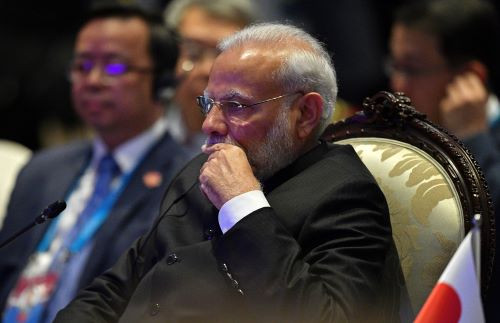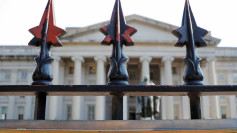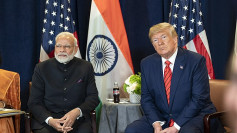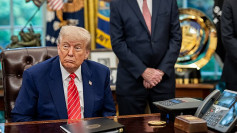Re-elected to a second five-year term in May 2019, Indian Prime Minister Narendra Modi will soon preside over India's lowest annual economic growth rate since 1978.
Economic analysts expect India's gross domestic product (GDP) to have grown in the region of only five percent or less for fiscal year 2019 to 2010 that ends in March. India's biggest bank, the State Bank of India, projects India's GDP growth rate for the current fiscal year at 4.6 percent, much lower than its earlier estimate of 5 percent. The country's Central Statistics Office (CSO) estimates India's GDP at five percent (at 2011-12 prices) and at 7.5 percent at current prices.
Chiming in with these lower growth figures is the World Bank, whose latest 2020 Global Economic Prospects report now places India's economic expansion at five percent compared to its previous estimate of 6.5 percent. On the other hand, India's real growth rate was 6.8 percent in 2018, said the International Monetary Fund (IMF).
The World Bank said a "lingering credit weakness emanating from non-banking financial companies" is much to blame for the much slower pace of economic growth. Earlier in 2019, analysts said most of India's financial institutions estimated the Indian economy would do better in fiscal 2019-20 than it did in 2018-19.
Their positive outlook faded fast after the Indian general elections in April to May led to economic growth stagnating due to policy and political missteps by Modi. Before the general elections, India's major financial institutions projected GDP growth at some 7 percent. That cheery mood changed from September to November when the average GDP growth projection by these institutions plummeted to only six percent.
Apart from corporate debt and credit weakness, the other major reasons for India's faltering growth were mostly political and economic miscues on the part of Modi.
The prime minister is accused of shelving deeper economic reforms in favor of supporting vested interests. Modi balked at implementing fundamental changes to laws on labor, land and taxation that would have made India more competitive and less restrictive of foreign investments. Modi also went slow on the long-demanded efforts to clean up a corruption-ridden banking system broaning under an immense mountain of bad loans.
The fiasco to remove all high-denomination banknotes from circulation to attack graft shoulder put a brake on economic expansion by crimping consumer spending and throttling corporate investments. The clumsy rollout of the Goods and Services Tax (GST) in 2017 still confuses companies years later and was again credited with depressing tax revenues.
The Comptroller and Auditor General (CAG) said tax collections under the GST for 2017-18 slowed down in the first year of its roll out. It blamed this unexpected result on the complexity of the returns mechanism and technical glitches that rendered the system prone to input tax credit frauds. It said the envisaged GST tax compliance system is non-functional without invoice matching and auto generation of refunds,
Modi's geopolitical gambits have also backfired big time. His 11th hour decision in November 2019 to withdraw India from the massive Regional Comprehensive Economic Partnership (RCEP) -- the world's biggest free trade pact -- was a huge blow to companies that wanted to boost India's attractiveness to foreign investors. Modi withdrew from the pact to protect vulnerable sections of the Indian economy while persuading China to grant reciprocal market access. He said RCEP was unacceptable to India in its current form, as it did not accommodate New Delhi's concerns and "core interests."
"When I measure the RCEP Agreement with respect to the interests of all Indians, I do not get a positive answer," said Modi.
After India's pullout, the 10-member Association of Southeast Asian Nations (ASEAN) along with China, Japan, South Korea, Australia and New Zealand will sign RCEP early this year.






